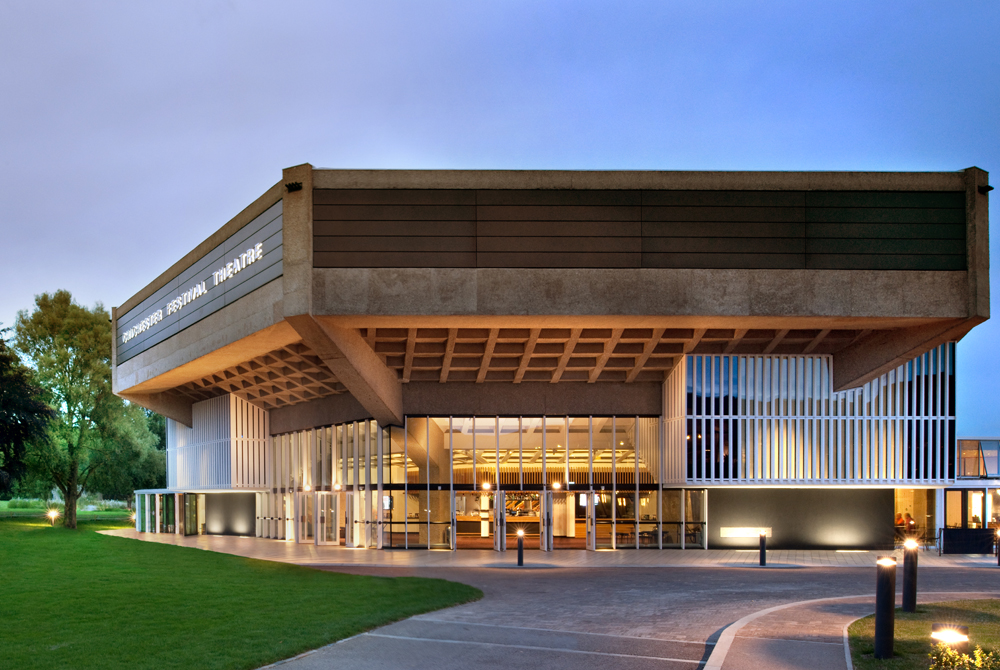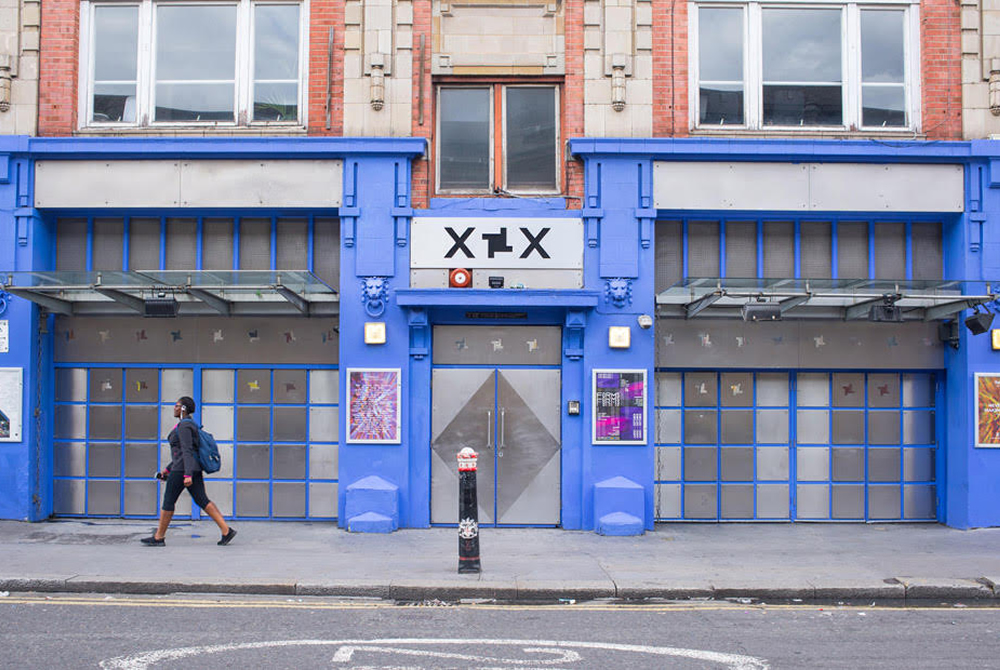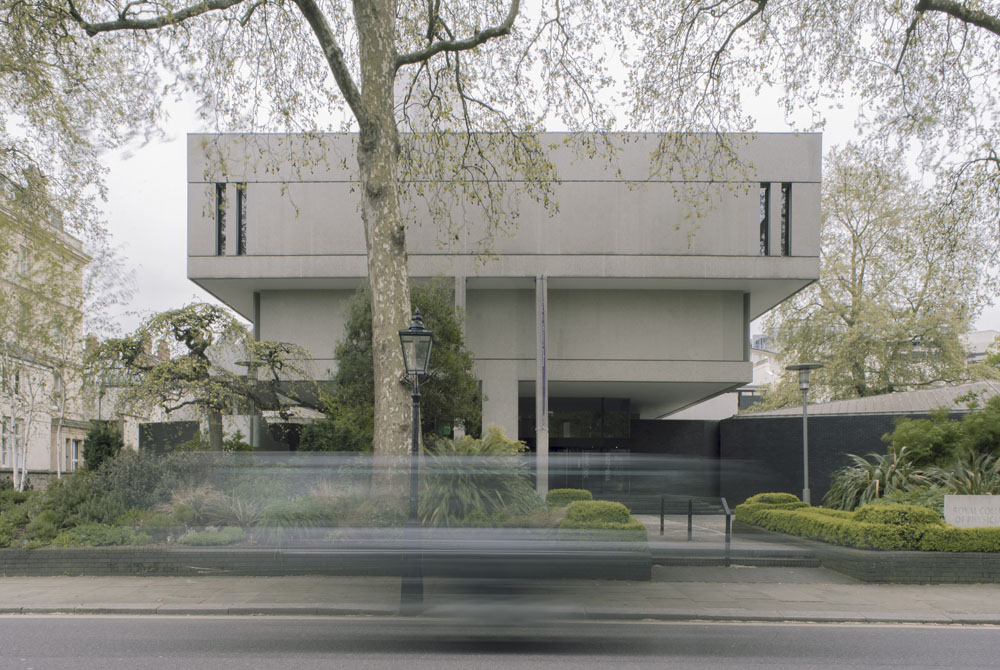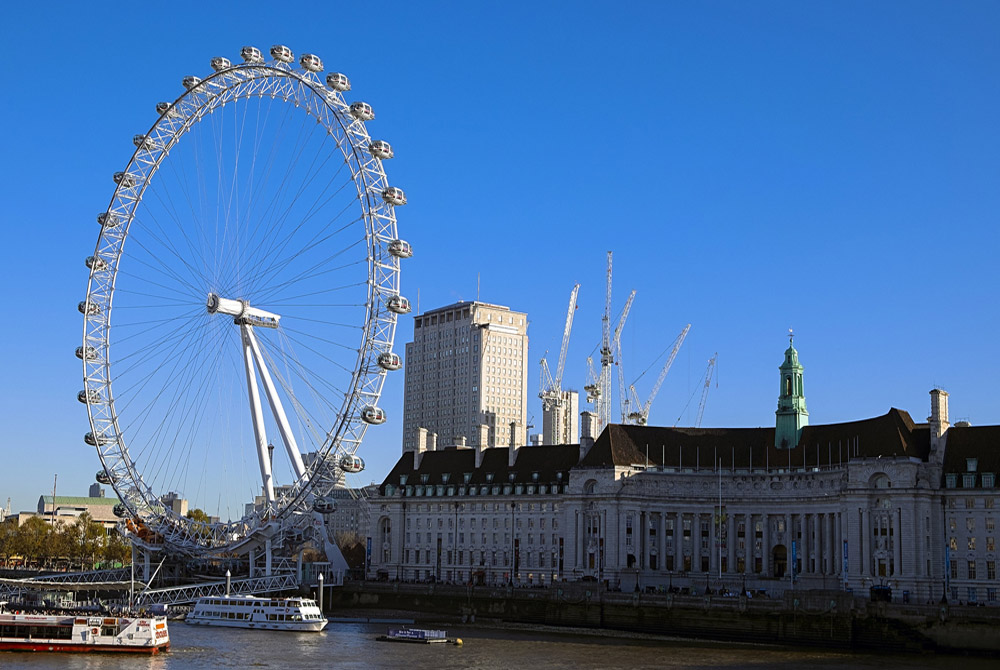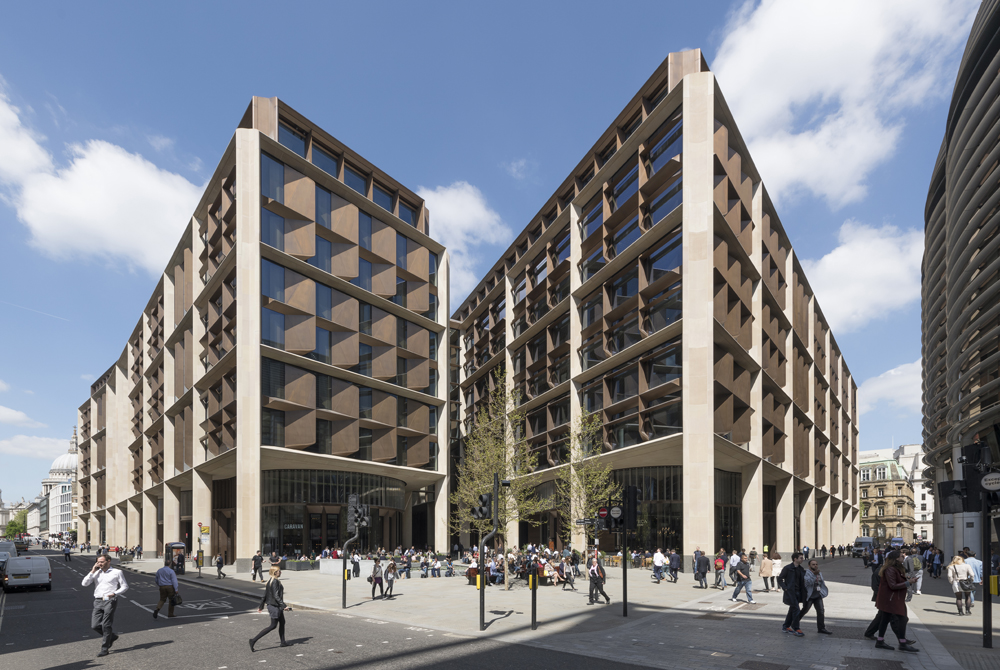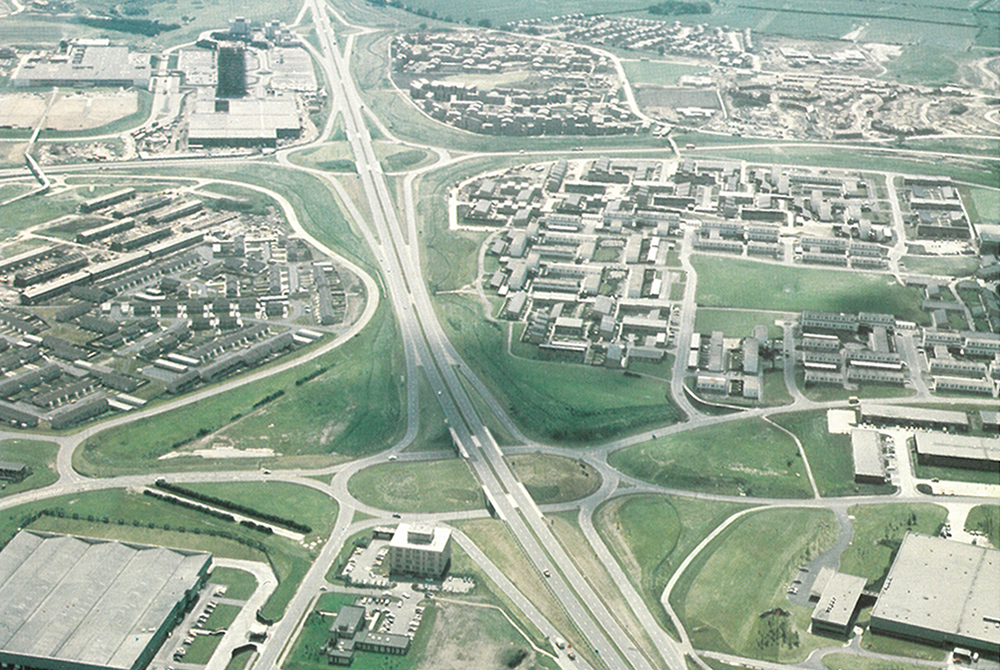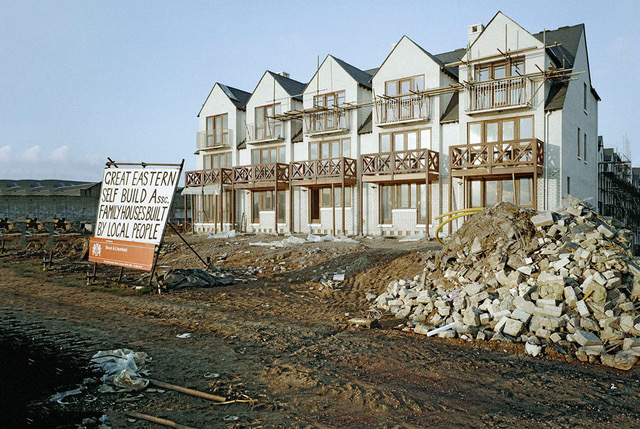...This is why I have chosen St Pancras Station. My spirits lift never fail to lift when I walk into it.
What is that makes a favourite building? Spatial drama, refinement, form – all play a part but for me the overriding criterion is emotion. This is why I have chosen St Pancras Station. My spirits lift never fail to lift when I walk into it. This is partly because of the raw Victorian self-confidence of the complex, which is really two buildings, Sir Gilbert Scott’s Midland Grand Hotel (as the St Pancras Hotel was originally called) rising cliff-like above the ever-moving human sea of the Euston Road and the train shed that shelters passengers beneath its giant canopy of iron and glass. Glorious. Herculean. Dynamic. And given an extra charge of excitement because of the destination of the high speed Javelin trains that leave from it. They slice through the north-eastern suburbs of London as though they didn’t exist; within minutes it’s at Rochester, then Ashford – and then, perhaps, on to the wonders of the Continent or, even better, Ramsgate. That’s where we have a seaside home and why I use the station so often. Every time it’s a thrill.
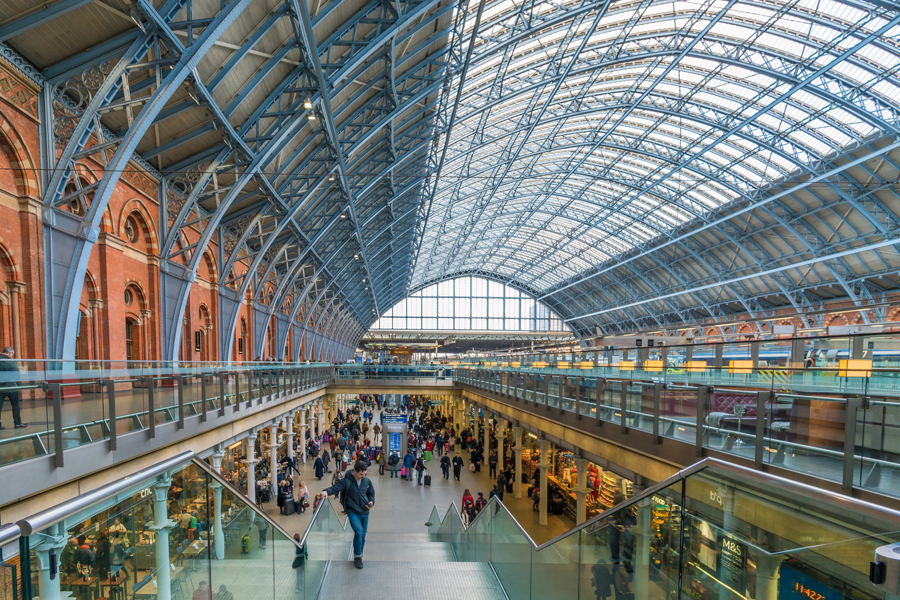 Inside St Pancras station, showing the Barlow train shed.
Inside St Pancras station, showing the Barlow train shed.
Sir George Gilbert Scott, architect of the hotel, was a Goth, committed to a revival of the best stylistic period (as he saw it) of the Middle Ages. There was something in romantic medievalism for everyone. To opponents of the French Revolution, it meant anti-Enlightenment patriotism. To John Keats, writing The Eve of St Agnes, it meant sex. To the promoters of the Midland Railway, who were late in elbowing their way into the capital, it meant a chance to wipe the eye of King’s Cross, Euston and the other grand stations which had got there first. To Scott, it meant work. He thrived on it. You can hardly move a mile through England without encountering him. Churches, built and restored; the Albert Memorial in Hyde Park, the Foreign Office on Whitehall; schools, workhouses, monuments, libraries – he never stopped. He loved Gothic architecture and he loved worldly success. The Midland Grand, Gothic to its last pinnacle, lives up to its name. It is, in every sense, grand.
 The original Midland Hotel designed by George Gilbert Scott, now re-invented and re-opened.
The original Midland Hotel designed by George Gilbert Scott, now re-invented and re-opened.
Behind it lies the engineering marvel of the train shed. With its slightly pointed (Gothic) profile, which has structural advantages over a segmental one, it is the tallest, widest single-span train shed in the country, very nearly in the world. Because the side are locked into place by girders under the platform, only the superstructure is affected by thermal expansion, the effect being likened by the architectural historian Simon Bradley to ‘the shallow breathing of a mighty creature in its sleep.’ Respect to the engineer who designed it, William Henry Barlow.
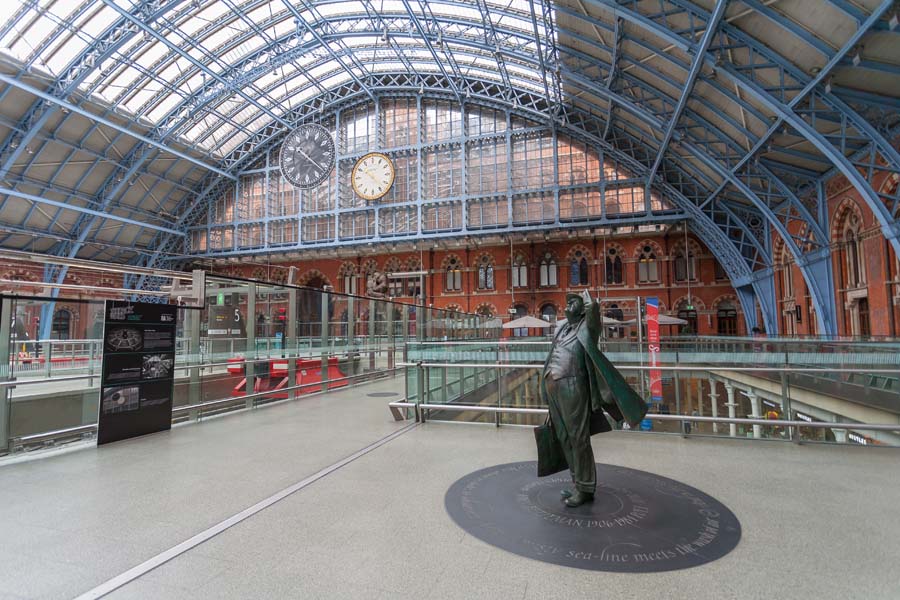 A statue of Sir John Betjeman has pride of place on the concourse, a tribute to his successful campaign to save George Gilbert Scott’s original design from demolition.
A statue of Sir John Betjeman has pride of place on the concourse, a tribute to his successful campaign to save George Gilbert Scott’s original design from demolition.
About fifteen years ago, both station and hotel were restored – reimagined might be a better word – the former as the London terminus for Eurostar. A brand-new train shed was created for the super-long trains. With it came shops, eating places, even a champagne bar.
Oh joy, oh wonder. What a curtain-raiser for my favourite destination on the South Coast. Even the thought of it wreathes me in smiles.


